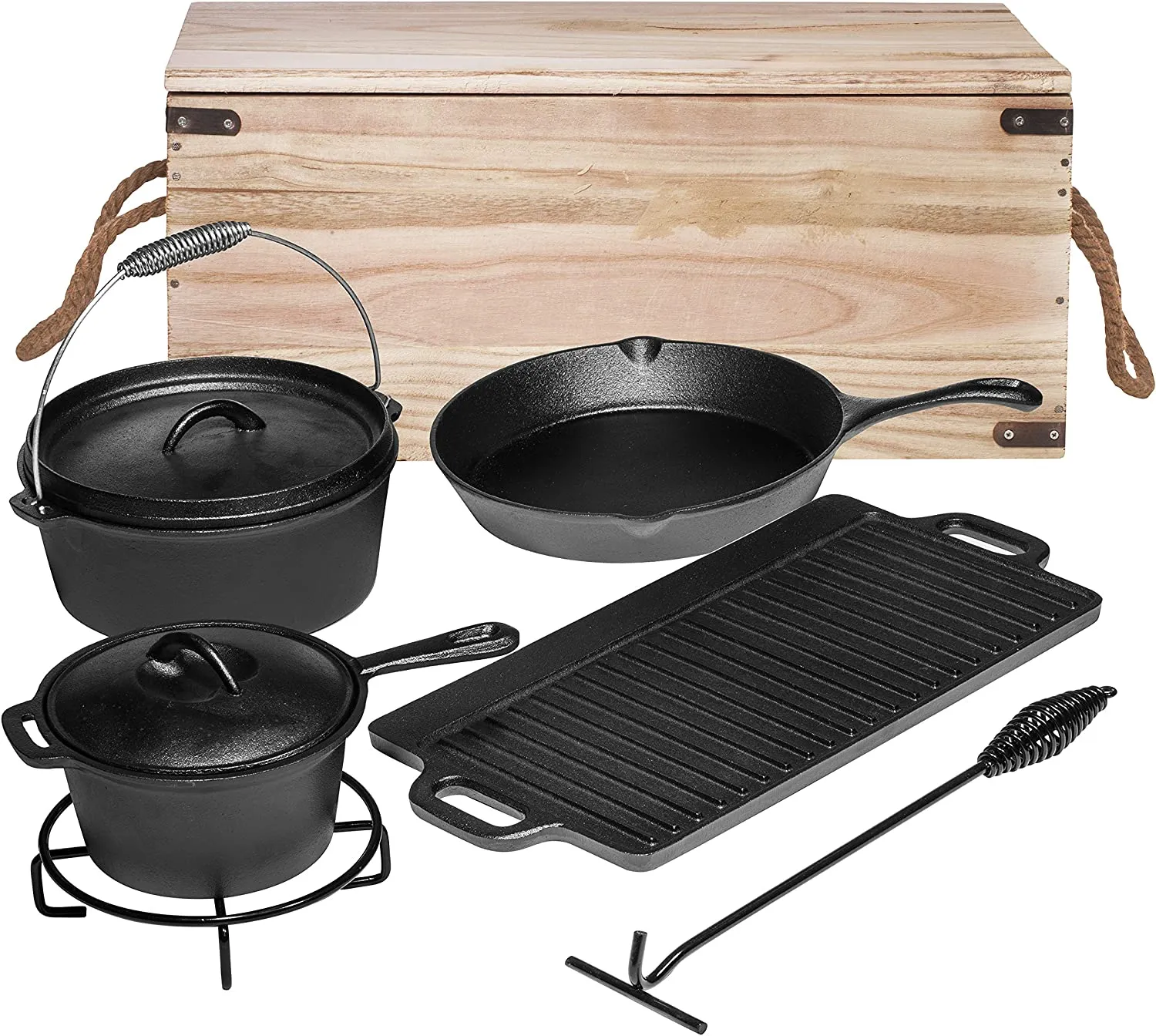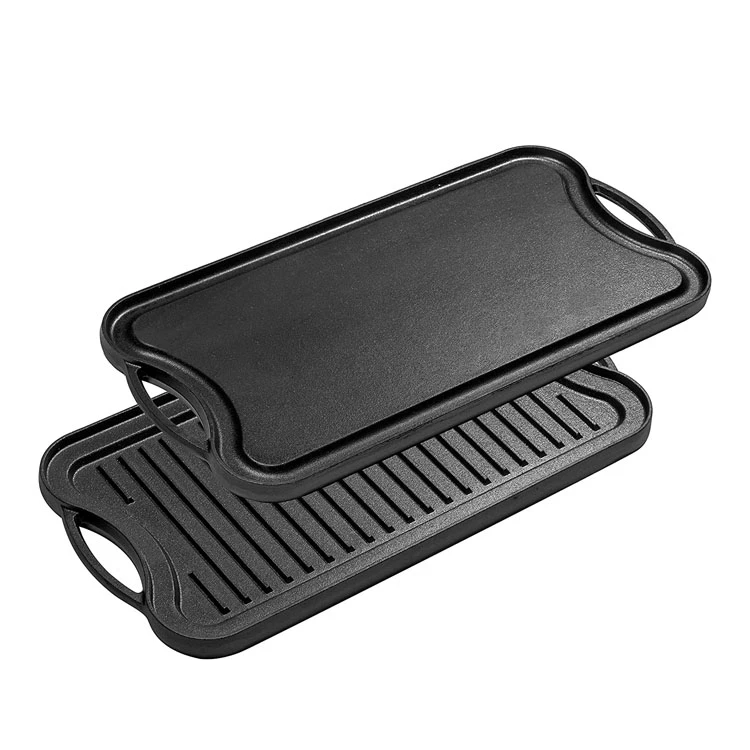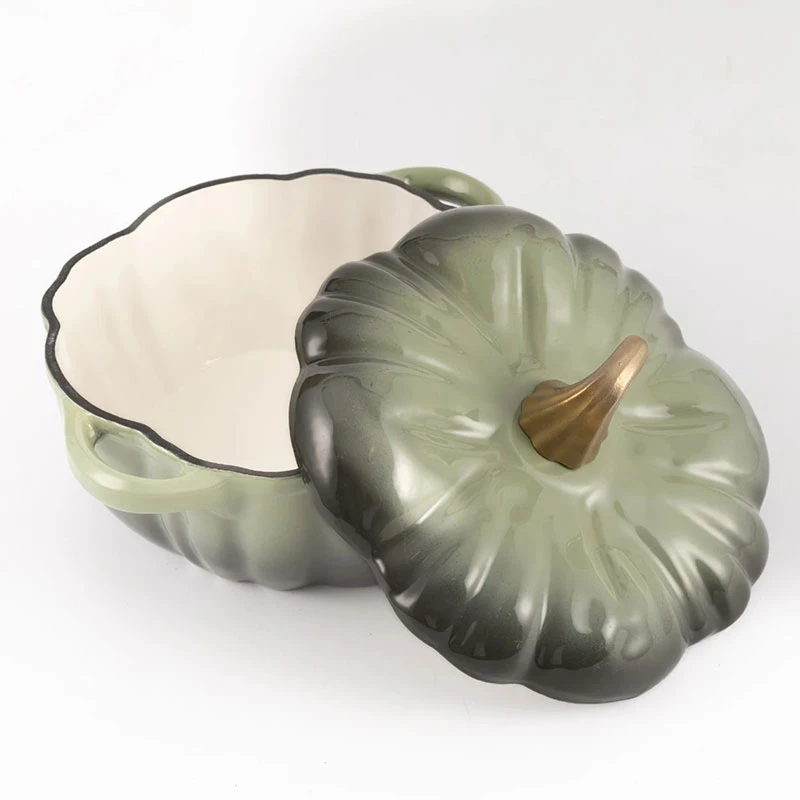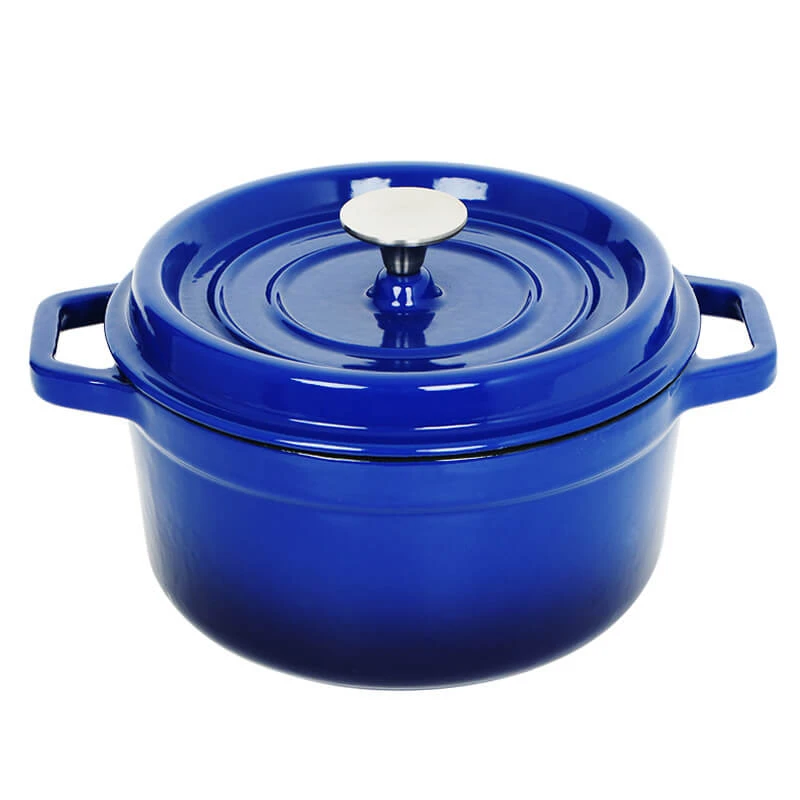
Why Cast-Iron Bakeware Delivers Superior Heat Retention for Perfect Baking
When it comes to baking, the right bakeware can make all the difference. Among the various materials available, cast-iron bakeware stands out for its exceptional heat retention and even cooking. Whether you're using enameled cast iron bakeware, a Dutch oven bakeware, cast iron cookie sheets, or even vintage cast iron bakeware, the results are consistently superior. This article explores why cast iron is the ultimate choice for baking, diving into its unique properties and how different types of cast iron bakeware enhance your culinary experience.

The Science Behind Cast Iron Bakeware Heat Retention
Cast iron bakeware is renowned for its ability to absorb, retain, and distribute heat evenly. Unlike thin metal pans that create hot spots, cast iron's dense structure ensures consistent temperatures, preventing uneven baking. This makes it ideal for dishes that require steady heat, such as bread, casseroles, and cookies. The material's high thermal mass allows it to stay hot longer, reducing temperature fluctuations in the oven. Whether you're using modern enameled cast iron bakeware or vintage cast iron bakeware, the principle remains the same—superior heat retention leads to perfectly baked goods every time.
Why Enameled Cast Iron Bakeware is a Kitchen Staple
Enameled cast iron bakeware combines the heat retention of traditional cast iron with a smooth, non-reactive coating. This makes it perfect for baking acidic dishes like tomato-based casseroles or fruit desserts without the risk of metallic flavors. The enamel layer also prevents rust and makes cleaning easier. Many professional chefs and home bakers prefer enameled cast iron bakeware because it seamlessly transitions from oven to table, offering both functionality and aesthetic appeal. Its versatility extends from baking artisan bread to slow-cooking stews, making it a must-have in any kitchen.
The Versatility of Dutch Oven Bakeware for Baking
A Dutch oven bakeware is a workhorse in both baking and braising. Its thick walls and tight-fitting lid trap moisture and heat, creating an ideal environment for baking crusty bread or tender roasts. The even heat distribution ensures that dishes cook uniformly, eliminating undercooked or burnt spots. Many bakers swear by Dutch oven bakeware for sourdough bread, as it mimics the steam-injected ovens used in professional bakeries. Whether you opt for a classic uncoated version or an enameled cast iron bakeware Dutch oven, its performance in heat retention and versatility is unmatched.
How Cast-Iron Cookie Sheets Elevate Your Baking
While most cookie sheets are made from thin aluminum or steel, cast iron cookie sheets offer a game-changing alternative. Their superior heat retention ensures cookies bake evenly with perfectly crisp edges and soft centers. Unlike flimsy sheets that warp under high heat, cast iron cookie sheets remain stable, providing consistent results batch after batch. They're also excellent for roasting vegetables or baking flatbreads, making them a multifunctional addition to any kitchen. For those who appreciate durability and performance, cast iron cookie sheets are a worthwhile investment.
The Timeless Appeal of Vintage Cast Iron Bakeware
There's a reason vintage cast iron bakeware remains highly sought after—its craftsmanship and durability are unparalleled. Older cast iron pieces were often made with thicker, heavier iron, enhancing their heat retention properties. Many bakers and collectors prize vintage cast iron bakeware for its ability to outperform modern alternatives. Restored properly, these pieces can last generations, becoming family heirlooms. Whether it's a classic skillet or a rare baking pan, vintage cast iron bakeware offers a nostalgic yet practical solution for today's kitchens.
About Vintage Estris de forn de ferro colat FAQS
If you're considering investing in cast iron bakeware, you likely have some questions. Below, we address common queries to help you make an informed decision.
What makes vintage cast iron bakeware more desirable than modern versions for some bakers?
Vintage cast iron bakeware often features ornate designs, logos, or craftsmanship styles no longer produced today.
Is enameled cast iron bakeware better than traditional cast iron?
Both have advantages. Enameled cast iron bakeware is easier to clean and doesn't require seasoning, making it low-maintenance. Traditional cast iron, however, develops a natural non-stick surface over time and is often more affordable.
Can I use Dutch oven bakeware for baking bread?
Absolutely! A Dutch oven bakeware is perfect for bread baking. Its heavy lid traps steam, creating a crispy crust, while the even heat distribution ensures a soft, well-risen interior.
How do I care for cast iron cookie sheets?
To maintain cast iron cookie sheets, avoid harsh detergents. Instead, clean them with warm water and a stiff brush. Dry thoroughly and apply a light coat of oil to prevent rust.
Is vintage- cast iron bakeware safe to use?
Yes, as long as it's properly restored. Remove any rust with steel wool and re-season the piece by coating it with oil and baking it. Once restored, vintage cast iron bakeware performs just as well as new pieces.
From enameled cast iron bakeware to vintage cast iron bakeware, these pieces are unmatched in heat retention, durability, and versatility. Whether you're baking cookies on cast iron cookie sheets or artisan bread in a Dutch oven bakeware, the results speak for themselves. Investing in high-quality cast iron ensures perfect baking every time, making it a timeless choice for any kitchen.
-
Tips for Buying Cast Iron Cooking Pots for SaleNotíciesJul.10,2025
-
The Safety Features of Modern Cast Iron Grill PansNotíciesJul.10,2025
-
The Role of Cast Iron Companies in Modern KitchensNotíciesJul.10,2025
-
The Benefits of Using a Cast Iron Frying PanNotíciesJul.10,2025
-
The Art of Cast Iron Camping Cookware CookingNotíciesJul.10,2025
-
How to Clean a Sticky Dutch Oven PotNotíciesJul.10,2025


